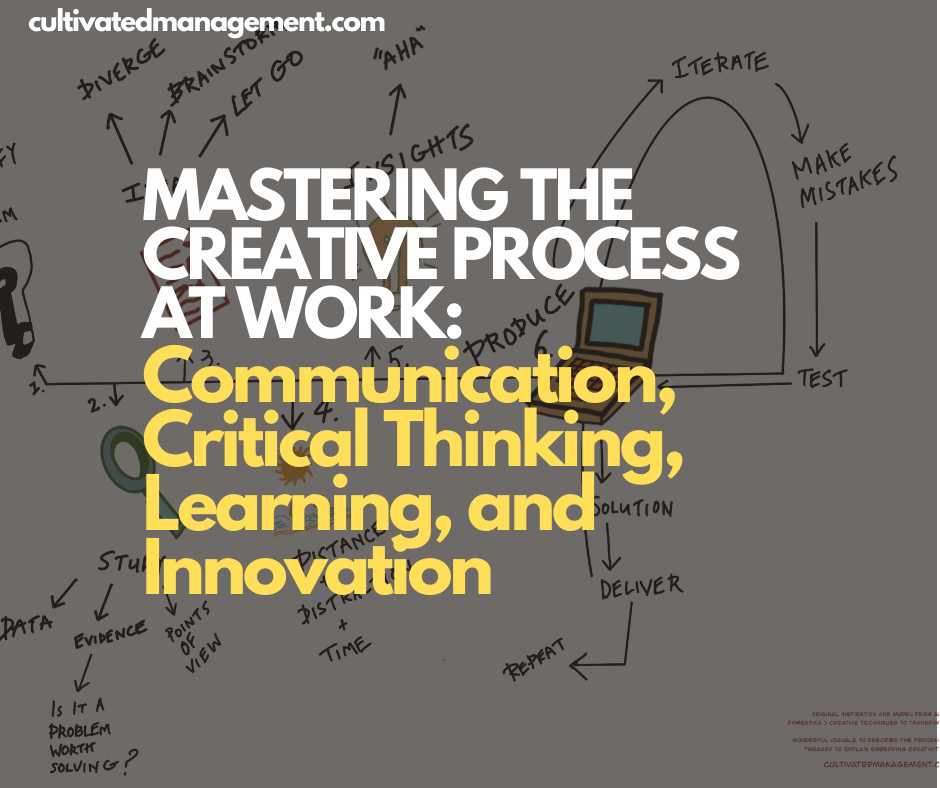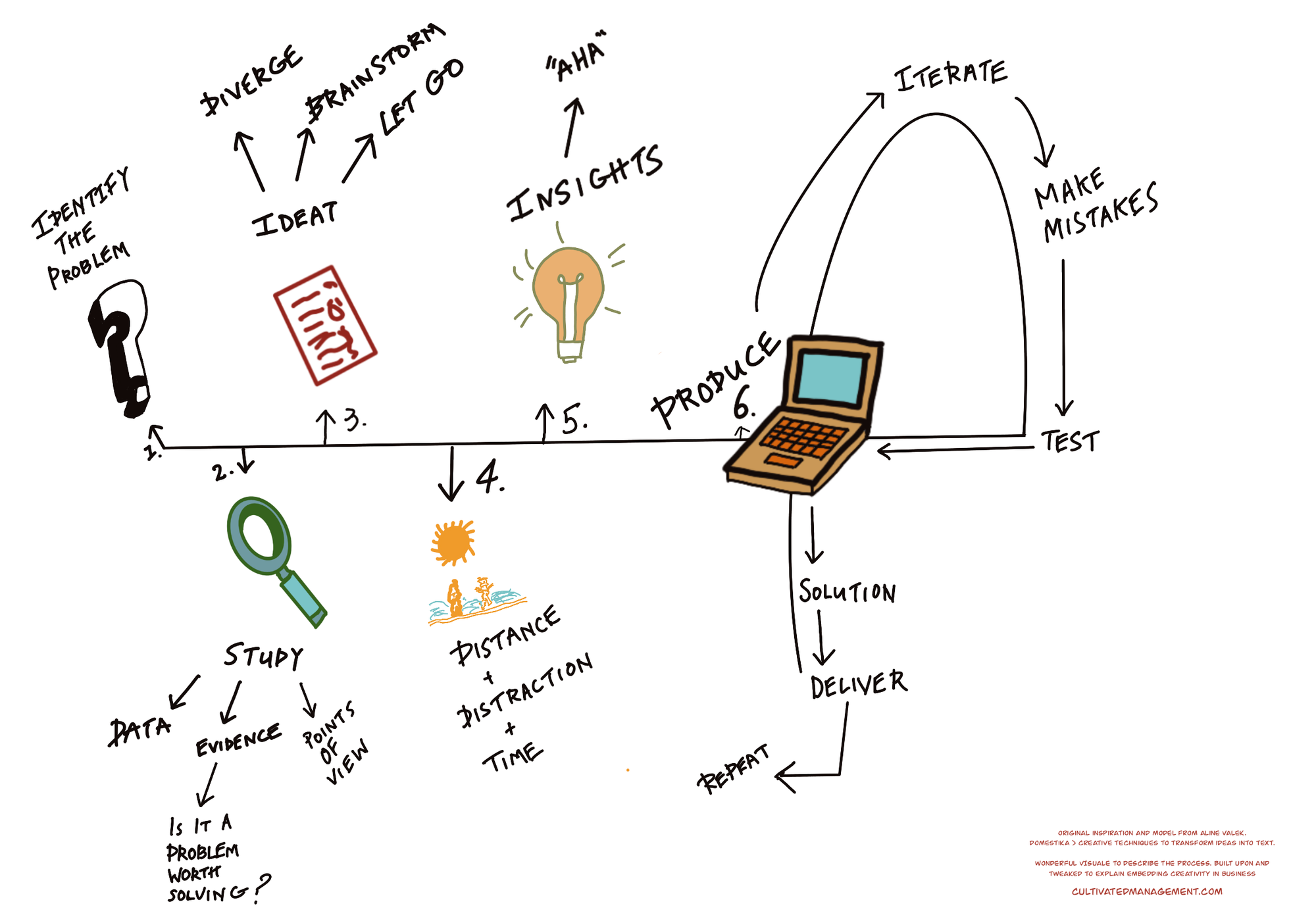
The Four Essentials for Creative, Agile Workplaces
There are four key focus areas at the heart of my writing and consulting work:
- Communication
- Creativity
- Critical thinking
- Personal cultivation (learning)
When these four are woven into our workplaces, they enrich the lives of employees and unlock true business agility. Leaders and managers, in particular, have a profound role in creating the conditions where these essentials can thrive. The reward is clarity, alignment, and purposeful action.
But it’s not easy. None of these appear by chance. They require focus, intention, and consistent practice.
Communication: Creating Clarity
Good communication is more than sending messages or giving updates. Done well, it creates clarity about the future and what people are working towards.
Clarity gives people confidence. It reduces the noise and ambiguity that so often blocks teams. Once people see the destination clearly, alignment becomes possible. When clarity and alignment exist, the work people do is not just activity — it’s the right activity.
👉 See this post on painting a bright picture of the future.
Creativity: Unlocking Human Potential
Workplaces thrive when people feel able to unlock their creativity. Creativity isn’t limited to artists or designers. It’s in the engineer who solves a complex problem, the team that reimagines a process, or the manager who reframes a persistent issue in a fresh way.
Creativity is what leads to new products, better services, and innovative ways of working. Just as importantly, it allows people to feel that their human potential is being fully used. Curiosity and creativity make work energising, not draining.
👉 See this post on creative problem solving in work.
Critical Thinking: Stronger Decisions, Better Conversations
Critical thinking is the discipline of testing assumptions and grounding decisions in evidence rather than in opinion or hierarchy. It doesn’t make conversations easier — in fact, it often makes them harder. But they are better conversations, because they lead to clarity.
In practice, critical thinking means slowing down to ask:
- What problem are we really trying to solve?
- Is it the right problem?
- Do we have enough evidence to move forward?
This behaviour saves enormous amounts of wasted time and prevents organisations from chasing the wrong outcomes.
👉 See this post on critical thinking.
Learning: Cultivating Growth
Learning is how organisations get incrementally better year after year. It keeps good people engaged, helps talent grow, and builds the competence needed to face tomorrow’s challenges.
A culture of learning compounds. Individuals sharpen their skills, teams improve how they collaborate, and the organisation as a whole gets better. Over time, this momentum is what separates thriving organisations from those that dwindle and stagnate.
👉 See this post on creating a learning culture.
The Creative Cycle
All four of these essentials come together in the creative process itself. A model I came across while studying a course on Domestika by Aline Valek. She put it well, and it mirrors what I’ve seen both in personal creativity and in organisational problem-solving.

Here’s how it unfolds:
1. Start with a Problem
Every act of creativity begins with a problem or a need. Problems and opportunities are two sides of the same coin. Solving a problem often opens up new opportunities. Taking on an opportunity always brings new problems to solve.
2. Apply Critical Thinking
Identifying a problem isn’t enough. We need evidence, insights, and examples to understand the problem thoroughly. Otherwise, we risk solving something trivial or irrelevant. Critical thinking asks: Is this problem worth solving?
3. Generate Ideas (Ideation)
Ideation is the spark — the generation of possible solutions. Brainstorming, combining existing ideas, sketching, or free writing can all work. But ideas alone aren’t creativity. Creativity begins when ideas are brought to life.
4. Step Back (Time and Distance)
Ideas need breathing room. When we give ourselves distance, the unconscious mind keeps working. This is why “aha” moments often arrive when we’re walking, showering, or doing something unrelated.
5. Act (Closed Thinking)
Once clarity strikes, it’s time for focus. Creativity demands periods of closed thinking — shutting out distractions, narrowing options, and simply producing. This is where momentum builds.
6. Iterate and Learn
Creation is rarely perfect on the first attempt. Reflection, feedback, and iteration help refine the work. The process alternates between open reflection and closed action: test, adjust, improve. This cycle mirrors the best business delivery models — iterative, adaptive, and focused on outcomes.
7. Ship It
At some point, the work needs to be released. Endless refinement in pursuit of perfection stalls progress. “Good enough” may sound like compromise, but it’s the only path to impact. An idea only delivers business value when it’s shared – and brought to life.
Creativity at Work and in Life
This creative cycle applies equally to personal projects and workplace innovation. In both cases, the challenge is the same: ideas aren’t valuable until they are brought to life.
For individuals, creative pursuits are good for the soul and mind. They help us feel alive. For organisations, creativity is a competitive necessity. The manager’s role is to create the environment for creativity to flourish — protecting time, energy, and space for people to do their best thinking.
In our personal lives, that responsibility falls on us.
Putting It Together
The four essentials — communication, creativity, critical thinking, and learning — are not nice-to-haves. They are the foundation of workplaces that enrich people and unlock business agility. Without them, clarity is absent, alignment becomes tricky, and progress stalls.
With them, leaders and teams gain the ability to solve real problems, create meaningful solutions, and keep learning as they go. The result is not only better business outcomes, but also more fulfilling work.
As Edwin Land, founder of Polaroid, once said:
“The ideal business is composed of managers and dreamers, and it is the responsibility of the former to protect the latter.”
Our task as leaders, managers, and individuals is to make space for both.
👉 Ready to move faster towards your business goals while building a workplace people love? I help managers and leaders get there—through coaching, consulting, and training. See how I can help you.
